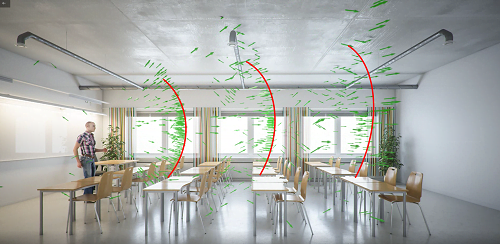Acoustics
The relationship between sound and learning spaces is not only about decibels but about how we feel in the space – What kind of atmosphere do we want regarding classroom management and behaviour? Shane Cryer from Saint-Gobain Ecophon gives Gratnells Learning Rooms his insights

Learning spaces should provide clear speech communication, low levels of noise and in turn should reduce distraction, disturbance and stress which can be associated with a lack of control of these aspects.
How the sound environment affects how we feel….
If we focus on the auditory impact of learning environments, it is surprising the profound impact acoustics can have. Numerous studies have shown how acoustic quality can affect classroom management and behavior during teaching and learning activities. Our work has involved digging deeper to identify learning spaces which work well as they can inform us better about how and why the acoustic quality can be a hidden barrier to unlocking the potential of learning spaces. The better the sound environment the more positive the students are towards participating which means teachers can also be positive and proactive. In contrast the poorer the sound environment the less engaged the students are likely to be which can create a negative atmosphere which teachers have to deal with taking time and energy away from the quality of teaching. It is also clear that a “one size fits all” approach is not practicable because it ends up not optimal for any teaching and learning activity.
You can find out more about our case studies here: http://www.iletc.com.au/acoustics-in-learning-spaces-june/
Shane Cryer, Concept Developer – Education at Saint-Gobain Ecophon Ltd speaks at the Planning Learning Spaces book launch in Westminster
Studies confirm that the classroom sound signature can affect how well students achieve (Picard and Bradley 2001). Learnometer constantly gives you automated feedback on sound volumes (including from the students!) and rhythms (for example from projector fans or air conditioning units) in your classroom, will highlight changes to be made, and plots the results of your changes by hour, day, and even year.
As a starting point we suggest that sound above around 72 decibels starts to be disruptive – although what the sound is matters too (for example is is hard to write when background music contains a familiar lyric). A simple guide for beats per minute is to stay below 80 bp
Professor Stephen Heppell

